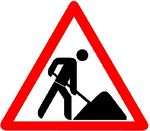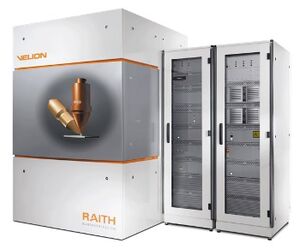Focused Ion-Beam Lithography (Raith Velion)
Jump to navigation
Jump to search
The printable version is no longer supported and may have rendering errors. Please update your browser bookmarks and please use the default browser print function instead.
Work In Progress This article is still under construction. It may contain factual errors. Content is subject to change. |
|
About
The 6300FS machine was installed at UCSB in May 2007.
This system uses the vector scan approach for electron beam deflection within a field, step and repeat for stage movement between fields, the combination of which allows the entire area of the sample to be exposed to the electron beam.
The machine can be run at 25, 50 and 100 kV. Note however that only the 100kV mode is used at UCSB.
Detailed Specifications
- Utilizes a “Hi-brightness” thermal field emission electron source (ZnO/W) with a minimum spot-size at the substrate of 2nm; operates at 100kV only
- Unique two lens/deflector scanning system:
- 4th lens => 20-25nm minimum line-width, 1.000nm scan step resolution, 500 x 500um scan field
- 5th lens => 7-8 nm minimum line-width, 0.125nm scan step resolution, 62.5x62.5um scan field
- Maximum deflector scan speed = 25MHz (=> 40ns/pixel minimum dwell time)
- 150x150 mm writable area; stage position control to 0.6nm accuracy (λ/1024); 10mm/s maximum stage speed
- Dynamic Focus and Stigmation Control for improved writing performance across the entire scan field.
- UNIX computer controlled
- Advanced Fracturing software available (Layout BEAMER from GeniSys, Inc)
- automated proximity correction of patterns possible
- ability to manually position write fields within a pattern for optimum inter-field writing performance
- ability to adjust beam scanning strategy within a write field for optimum intra-field writing performance
- fine tuning of line-edge roughness by shot pitch correction
Recipes
- Recipes > Lithography > FIB Lithography
- Contains starting recipes etc.

